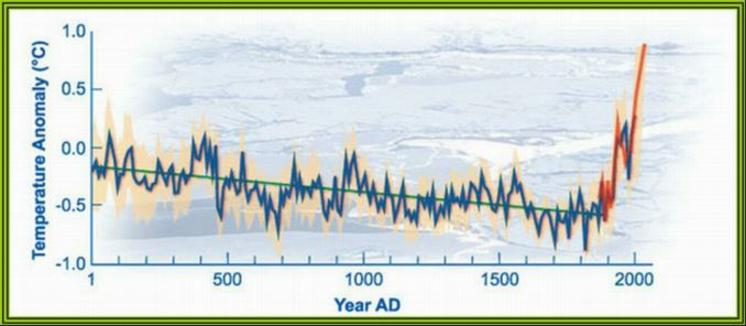From Climate Progress:
M.I.T. doubles its 2095 warming projection to 10°F — with 866 ppm and Arctic warming of 20°F
Today’s question: How the heck does the Greenland ice sheet survive accelerated disintegration from projected 20°F warming by the 2090s?
Back in January, the Program issued a remarkable report by over a dozen leading experts, doubling their 2095 warming projection to 5.2°C. The media mostly ignored it, which is no surprise, since the media generally ignores the realists in general. Now, the MIT study has been published in a peer-reviewed journal — The American Meteorological Society’s Journal of Climate — which obviously it makes it much more credible and high-profile. The study concludes:
The MIT Integrated Global System Model is used to make probabilistic projections of climate change from 1861 to 2100. Since the model’s first projections were published in 2003 substantial improvements have been made to the model and improved estimates of the probability distributions of uncertain input parameters have become available. The new projections are considerably warmer than the 2003 projections, e.g., the median surface warming in 2091 to 2100 is 5.2°C compared to 2.4°C in the earlier study. Many changes contribute to the stronger warming; among the more important ones are taking into account the cooling in the second half of the 20th century due to volcanic eruptions for input parameter estimation and a more sophisticated method for projecting GDP growth which eliminated many low emission scenarios.
[Note: That rise is compared to 1981-2000 temperature levels. So you can add at least 0.5 °C and 1.0 °F for comparison with pre-industrial temperatures.]
Their median projection for the atmospheric concentration of carbon dioxide in 2095 is a jaw-dropping 866 ppm. As grim as this prediction is, it is still almost certainly an underestimate of what will happen on our current path of unrestricted greenhouse gas emissions, as Prinn explains:
And the odds indicated by this modeling may actually understate the problem, because the model does not fully incorporate other positive feedbacks that can occur, for example, if increased temperatures caused a large-scale melting of permafrost in arctic regions and subsequent release of large quantities of methane, a very potent greenhouse gas. Including that feedback “is just going to make it worse.
Speaking of feedbacks, the model shows staggering warming near the poles:
Latitudinal distribution of changes in SAT in the last decade of 21st century relative to 1981-2000. Red solid lines are median, 5% and 95% percentiles for present study: dashed blue line the same from Webster et al., (2003).
Median arctic warming — north of 70° latitude — (from 1981-2000 levels) is 20°F! How could Greenland’s ice sheet possibly survive that?
Why the change in the modeling, compared to 2003? The Program’s website explains:
There is no single revision that is responsible for this change. In our more recent global model simulatations, the ocean heat-uptake is slower than previously estimated, the ocean uptake of carbon is weaker, feedbacks from the land system as temperature rises are stronger, cumulative emissions of greenhouse gases over the century are higher, and offsetting cooling from aerosol emissions is lower. No one of these effects is very strong on its own, and even adding each separately together would not fully explain the higher temperatures. Rather than interacting additively, these different affects appear to interact multiplicatively, with feedbacks among the contributing factors, leading to the surprisingly large increase in the chance of much higher temperatures.
The carbon sinks are saturating, and the amplifying feedbacks are worse than previously thought — that, of course, is a central understanding of all climate realists.
For the no policy scenario, the researchers concluded that there is now a nine percent chance (about one in 11 odds) that the global average surface temperature would increase by more than 7°C (12.6°F) by the end of this century, compared with only a less than one percent chance (one in 100 odds) that warming would be limited to below 3°C (5.4°F).
To repeat, on our current emissions path, we have a 9% chance of an incomprehensibly catastrophic warming of 7°C by century’s end, but less than a 1% chance of under 3°C warming.
“The take home message is that if we do little or nothing about lowering greenhouse gas emissions that the dangers are much greater than we thought three or four years ago,” said Ronald G. Prinn, professor of atmospheric chemistry at MIT. “It is making the impetus for serious policy much more urgent than we previously thought.”
This article is based on a journal entry from 2009. It takes that long for the full peer review process to be completed. In the mean time, several more reports have been filed.
Each one gets worse.
Welcome to By 2100!
This Blog is designed to be a Diary of Events illustrating Global Climate Change, and where it will lead.
Commentary is encouraged, but this Blog is not intended for discussion on the Validity of Climate Change.
Category Labels
- Climate Events (85)
- Climate Solutions (45)
- Videos (42)
- Climate Statistics (39)
- The Deniers (34)
- Humour (15)
- Basic Information (5)
Monday, June 7, 2010
Subscribe to:
Post Comments (Atom)
www.know-the-number.com
Our Climate is Changing!Please download Flash Player.


No comments:
Post a Comment